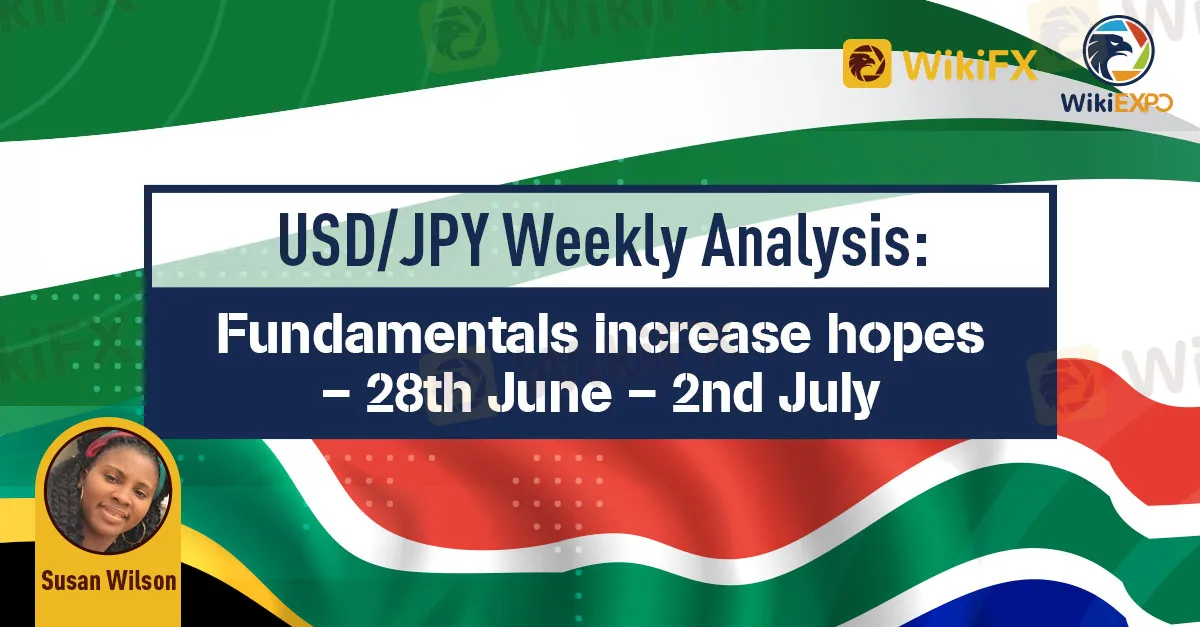简体中文
繁體中文
English
Pусский
日本語
ภาษาไทย
Tiếng Việt
Bahasa Indonesia
Español
हिन्दी
Filippiiniläinen
Français
Deutsch
Português
Türkçe
한국어
العربية
USD/JPY Weekly Analysis: Fundamentals increase hopes – 28th June – 2nd July
Abstract:USD/JPY attains maximum trade and close after the pandemic panic.

USD-JPY attains maximum trade and close after the pandemic panic.
On Wednesday, the USD-JPY surged to 111.10 and closed at 110.95, its uppermost since the matching plague crests of last February and March. The pair has grown 8% this year on the reverse that commenced during early January.
On June 16, a suddenly encouraging valuation of the US economy from the Fed provoked the profits this week and last week, however Wednesday‘s peaks were only slightly better than the 110.96 zenith and 110.71 close of March 31. Friday’s decline to 110.49 was chiefly gain-taking on the current run, not a variation of trend.
Statistics from Japan and the US were short of anticipations but did not change the difference between the two economies.
Japans comparatively short immunization rate has elevated worries that novel variations of the contagion, more infectious however less hazardous, might push for new-fangled economic limits.
Housing sales stays robust in the US. Durable Goods orders were short of expectation in May but Aprils outcomes were reviewed abruptly higher, as its Retail Sales figures.
USD-JPY Fundamental Analysis
Fundamental economic variances between the two countries supported by the increasing interest rate discrepancy should keep the USD-JPY green in the meantime, however the sheer fresh advances make it susceptible to the turnover cause. The first upward goal is the last March's peak close of 111.25.
Technical pointers stay optimistic with backing far more predominant, fresh and significant than resistance.

Next week, the series of Tankan Reports on manufacturing for June and the second quarter are anticipated to recover but it is doubtful to disturb market opinions. Aprils Retail Trade figures, even if higher as predicted, are backward. ISM manufacturing figures and payrolls for June ought to highlight the variances between the two nations and provide stable, if not volatile backing for the buck.
USD-JPY technical Analysis
The USD-JPY is resolutely concealed in its annual bullish move. The MACD stays a bull signal, yet somewhat lessened on the week. The Relative Strength Index heightened on Monday but impetus is still alive. The True Range pointer has slid after the shrill advance in the USD-JPY on June 16 but Friday's reverse predicts more advances. The break between the 100DMA and the 200-day MA , which intersected on April 8, remains to broaden, also suggesting bullish movement.

Support areas are humiliations of wealth. Their frequency makes the choice of the most significant almost a subject of beauty rather than mechanics. Resistance, other than this week's high close at 110.95, roots from the fright hills of February and March 2020. These areas are much feebler for the long trading, though the Wednesday peak of 110.10 did not cross the late March 2020 apex of 111.20. Past the resistance at 112.00, trading reverses to levels from the fall of 2019.

Resistance: 110.95, 111.25, 111.60, 112.00
Support: 110.40, 110.20, 109.80, 109.65, 109.35
Disclaimer:
The views in this article only represent the author's personal views, and do not constitute investment advice on this platform. This platform does not guarantee the accuracy, completeness and timeliness of the information in the article, and will not be liable for any loss caused by the use of or reliance on the information in the article.
Read more

Trading Psychology – 4 Wise Quotes From The Legendary Mark Douglas
In the world of trading, few books have had the impact of Mark Douglas’ big hit Trading in the Zone. Written almost two decades ago, the book has become a must-read for traders looking to elevate their game to legendary status. While there is so much wisdom to be found in the book, we’ve compiled 5 of the best quotes about trading psychology that every trader should read.

EUR/USD Forecast: New lows ahead of the weekend? ECB, covid and technical all point lower.
Optimism has been weighing on the safe-haven dollar – but not against the euro. The common currency's failure to recover is a sign of weakness that could be followed with falls to fresh lows once the mood sours again – and there are reasons to expect that to happen sooner rather than later.

EURJPY WEEKLY FORECAST. Price Likely To Rise Above 131.000.
The price of EURJPY has been on a steady rise ever since it made a low of 128.808. Other currencies collapsed against the Japanese Yen two weeks ago.

AUD Is Weak Under All-rounded Pressure
A rise in the wake of a fall was seen by DXY last week ascribed to the uncertain time of delisting caused by the Federal Reserve (Fed). However, the reason for the rally of DXY last Friday is the vigorous growth of personal consumption expenditures (PCE) released by the U.S. Bureau of Economic Analysis (BEA).
WikiFX Broker
Latest News
Geopolitical Events: What They Are & Their Impact?
Top 10 Trading Indicators Every Forex Trader Should Know
ASIC Sues Binance Australia Derivatives for Misclassifying Retail Clients
WikiFX Review: Is FxPro Reliable?
Malaysian-Thai Fraud Syndicate Dismantled, Millions in Losses Reported
Why Do You Feel Scared During Trade Execution?
WikiFX Review: Something You Need to Know About Markets4you
Revolut Leads UK Neobanks in the Digital Banking Revolution
Fusion Markets: Safe Choice or Scam to Avoid?
SEC Approves Hashdex and Franklin Crypto ETFs on Nasdaq
Currency Calculator


